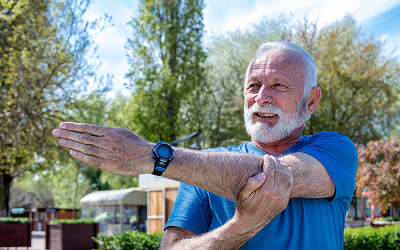Introduction
Millions of people live with chronic pain or degenerative conditions that limit their mobility and affect their quality of life.
Traditional treatments – such as surgery or long‑term medication use – often relieve pain temporarily without addressing the underlying damage.
Regenerative medicine looks at the problem differently: instead of masking symptoms, it attempts to repair or regenerate the tissues causing pain.
Stem cell healing options are at the forefront of this approach. By harnessing the body’s own capacity for repair, stem cell–based treatments aim to alleviate chronic pain, restore damaged tissues and reduce the need for invasive procedures.
This article explores how stem cell therapy works, which conditions may benefit, its advantages, limitations and what patients can expect when they pursue regenerative care.
What Are Stem Cells?
Stem cells are unique cells capable of self‑renewal and differentiation into specialized cell types.
During development they form organs and tissues, and throughout adulthood they help repair and replenish damaged cells. There are several categories of stem cells, each with distinct characteristics:
Types of Stem Cells (Adult, Embryonic, Induced Pluripotent)
- Embryonic stem cells (ESCs): Obtained from the inner cell mass of early‑stage embryos (blastocysts), these cells can differentiate into all three germ layers and thus any cell type. Because they are pluripotent, ESCs have tremendous regenerative potential but raise ethical concerns about embryo use and can form teratomas if not carefully controlled.
- Adult (somatic) stem cells: Found in tissues throughout the body – such as bone marrow, adipose tissue, umbilical cord, placenta and skin – adult stem cells are multipotent. They can generate several cell types within their tissue lineage (for example, bone marrow–derived mesenchymal stem cells (MSCs) can form bone, cartilage and fat). Adult stem cells are important for normal tissue repair and regeneration and, unlike ESCs, do not raise the same ethical issues.
- Induced pluripotent stem cells (iPSCs): These are adult cells reprogrammed to a pluripotent state using specific transcription factors. iPSCs share many properties with embryonic stem cells and offer the possibility of producing patient‑specific pluripotent cells without embryo destruction.
Potency and Differentiation
Stem cells are often categorized by their potency:
- Totipotent cells (e.g., the fertilized ovum and its first divisions) can create all cell types and even an entire organism.
- Pluripotent cells (embryonic stem cells or iPSCs) can differentiate into any cell type but cannot form a complete organism.
- Multipotent cells (adult stem cells) are restricted to generating cell types within a specific germ layer – for example, MSCs produce bone, cartilage and fat but not neural tissue.
Different tissues require different stem cell sources. Bone marrow and adipose tissue provide MSCs suited for orthopedic and musculoskeletal repair; umbilical cord blood provides hematopoietic stem cells for blood and immune system disorders; and neural stem cells reside in the brain and spinal cord.
Selecting the right cell type is crucial because tissue‑specific stem cells cannot spontaneously become unrelated cell types.
How Stem Cell Healing Options Work in Practice
Stem cell therapy is not a “magic fix.” Rather, it relies on well‑studied biological mechanisms to support healing. Understanding these mechanisms helps patients set realistic expectations.
Mechanisms of Action: Repair and Immune Modulation
- Tissue Repair and Regeneration – When stem cells are delivered into damaged tissue, they can engraft in the injury site and differentiate into the needed cell type (e.g., chondrocytes in cartilage). Mesenchymal stem cells (MSCs), commonly used in orthopedic applications, rapidly divide and repair damaged cartilage. In regenerative therapies, harvested MSCs are often placed onto scaffolds that provide a framework for tissue growth.
- Paracrine Signaling – Beyond direct replacement, MSCs release trophic factors such as growth factors, cytokines (including TGF‑β, IL‑2 and IL‑6) and angiogenic factors. These secreted molecules reduce inflammation and stimulate surrounding cells to proliferate and repair. Some studies suggest that paracrine effects may be even more important than direct engraftment.
- Immunomodulation – Chronic pain conditions often involve chronic inflammation. MSCs can modulate the immune response by inhibiting differentiation of dendritic cells and reducing T‑cell–mediated secretion of inflammatory cytokines (such as interferon‑α and IL‑4). They also affect natural killer cells, creating an environment more conducive to healing.
What Patients Might Expect
Stem cell treatments are typically performed in outpatient settings. The general steps involve:
- Harvesting – If using autologous cells, a clinician harvests bone marrow or adipose tissue under local anesthesia. For allogeneic products, donor MSCs derived from umbilical cord or placenta may be processed under strict regulatory standards.
- Processing – The harvested tissue is processed to isolate the stem cell fraction; for example, bone marrow aspirate is centrifuged to separate MSC‑rich layers. In some cases, the cells are expanded in culture or combined with scaffolds before injection.
- Injection or Implantation – Stem cells are guided to the damaged tissue via imaging‑assisted injections (for joints or discs) or applied surgically. For conditions like disc degeneration, cells may be injected through transpedicular approaches or into hydrogels and scaffolds that enhance retention.
- Follow‑up – Patients may require multiple injections and follow‑up visits. Benefits are often gradual, as stem cells integrate and stimulate repair over months.
Common Conditions Treated with Regenerative Stem Cell Therapy
Regenerative medicine clinics offer stem cell therapy for a range of chronic pain and degenerative conditions. Below are some common categories and the scientific rationale behind them.
Joint Conditions (Knees, Hips and Other Joints)
Degenerative joint diseases like osteoarthritis (OA) result from progressive loss of cartilage and chronic inflammation. Conventional treatments focus on pain relief and joint replacement, but total knee arthroplasty leaves up to 20 % of patients with persistent pain and carries significant cost and morbidity.
Multiple randomized controlled trials have shown that MSC therapy can reduce pain and improve function in OA by differentiating into chondrocytes, secreting growth factors and modulating inflammation.
Stem cells can be extracted from bone marrow, adipose tissue or synovium and injected into the joint; they create a repair microenvironment that reduces inflammation and stimulates cartilage regeneration.
Clinical trials have noted improvements in scores such as KOOS and WOMAC, with the most pronounced benefits appearing six to 12 months after treatment.
For sports injuries like meniscus tears, ACL injuries and cartilage defects, MSCs may support healing by differentiating into ligament or tendon cells and releasing factors that recruit native progenitor cells.
Preliminary studies show improved pain and mobility in chronic patellar tendinopathy and femoral head necrosis, though larger trials are needed.
Spine and Back Issues
Chronic low back pain is often linked to intervertebral disc degeneration, a condition with limited treatment options. Studies combining mesenchymal stem cells with nucleus pulposus cells have shown reduced disc degeneration, recovered disc height and decreased pain in animal models.
In limited human studies, MSC therapy for discogenic back pain has demonstrated improvements in pain and function, though further clinical data are required. The therapeutic rationale involves MSCs suppressing inflammatory cytokines and matrix‑degrading enzymes while regenerating disc tissue.
Neuropathy and Nerve‑Related Conditions
Neuropathic pain arises from injury or disease affecting the nervous system. Conditions such as diabetic neuropathy, radiculopathy, trigeminal neuralgia and sciatic nerve injury are difficult to treat because damaged nerves have limited innate healing capacity.
Stem cell therapy may offer a regenerative approach: MSCs can differentiate into neurons and glia and secrete neurotrophic factors that protect neurons and promote regeneration. Animal studies on diabetic neuropathy show that MSC therapy reduces pro‑inflammatory cytokines and improves nerve function. C
linical evidence remains limited, but early results suggest that stem cells may help reduce burning, shooting and sharp pain associated with neuropathies.
Musculoskeletal Injuries and Soft‑Tissue Damage
Tendons, ligaments and cartilage often heal poorly due to limited blood supply. MSCs can rapidly divide and generate connective tissue cells, making them promising for rotator cuff tears, labral tears, tendinitis and bursitis.
Bone marrow aspirate concentrate (BMAC) and peripheral blood stem cells have been used to treat chronic tendinopathy and femoral head necrosis, leading to improved pain and function in small clinical studies.
Because the evidence is still emerging, potential patients should discuss these options with experienced regenerative medicine physicians.
Anti‑Aging and Regenerative Wellness
Regenerative therapy is also being explored for age‑related degeneration and systemic inflammatory conditions. By modulating the immune system and supporting tissue repair, stem cells may help improve overall well‑being and energy levels.
However, evidence is preliminary, and such therapies should be considered experimental until robust clinical trials validate their safety and efficacy.
Advantages of Regenerative Stem Cell Therapies
Stem cell healing options offer several potential advantages over conventional treatments:
- Reduced Need for Invasive Surgery – Many patients seek stem cell therapy as an alternative to joint replacement or spinal fusion. Clinical trials indicate that MSC therapy can alleviate pain and improve function, potentially delaying or avoiding surgery.
- Shorter Recovery and Minimal Downtime – Procedures are typically minimally invasive and performed in outpatient settings. Because stem cells harness natural healing processes, recovery is generally quicker than with major surgery.
- Targeting the Underlying Cause – Rather than masking symptoms, stem cells aim to regenerate damaged tissues and modulate the inflammatory environment responsible for chronic pain. This approach may provide longer‑term relief and improved function.
- Autologous Options – Using a patient’s own cells (autologous therapy) reduces the risk of immune rejection and disease transmission. MSCs are immunoprivileged, meaning they evoke little immune reaction when transplanted.
- Personalized Medicine – Treatment protocols can be tailored to the individual’s condition, including cell source, processing methods and delivery techniques.
Risks, Limitations and Ethical Considerations
Despite their promise, stem cell therapies are not a panacea. Patients and practitioners must weigh benefits against potential risks and ethical issues.
Limited Proven Treatments and Regulatory Caution
The International Society for Stem Cell Research notes that only a few stem cell treatments have been proven safe and effective. Currently, the best‑established therapy is hematopoietic stem cell transplantation for blood disorders like leukemia; some bone, skin and corneal injuries are treated with tissue grafts containing stem cells.
Other applications remain experimental and should be pursued only in the context of legitimate, regulated clinical trials. Clinics that market unproven stem cell treatments often exaggerate benefits and minimize risks. Patients should be wary of such claims and consult qualified healthcare providers.
Risks of Unproven Treatments
Trying unproven stem cell therapies can result in complications and financial burdens. Potential risks include new or worsened health problems, exclusion from future clinical trials, and high out‑of‑pocket costs.
Additionally, not all autologous treatments are inherently safe: cells removed from the body can be contaminated or altered during processing; reintroducing them into tissues where they do not belong may cause harm.
Patients should understand that every medical procedure carries risks, and clinics should disclose these risks openly.
Adverse Effects and Tumor Risk
Meta‑analyses show that many patients experience no serious adverse events after MSC transplantation. Minor side effects such as pain at the injection site, swelling, or temporary nausea have been reported.
However, rare but significant complications include infection or, in theoretical scenarios, tumor formation. Malignant transformation can occur if transplanted stem cells acquire oncogenic mutations or if they carry “disease memory” from diseased tissue.
Careful screening of cell cultures and adherence to regulatory standards is essential to minimize these risks. In the United States and many other countries, stem cell products are considered biologics and are regulated by agencies such as the Food and Drug Administration (FDA).
Patients should seek therapies compliant with national regulations and conducted under institutional review board oversight.
Ethical Considerations
Embryonic stem cells raise ethical concerns because obtaining them involves destroying early embryos. This ethical debate has fueled the development of iPSCs, which are reprogrammed adult cells that avoid embryo destruction.
Additionally, offering expensive unproven treatments to vulnerable patients may exploit hope and trust. Ethical regenerative medicine prioritizes patient safety, informed consent and evidence‑based practice.
The Stem Cell Healing Journey at a Regenerative Clinic
Understanding what happens during a regenerative medicine program can help patients make informed decisions.
Consultation and Evaluation
The journey begins with a comprehensive consultation. A regenerative medicine specialist reviews the patient’s medical history, imaging studies and previous treatments.
Diagnostic tests may include X‑rays, MRI or ultrasound to assess the extent of tissue damage. The provider determines whether the patient is a good candidate for stem cell therapy or whether alternative treatments (such as physical therapy, weight management or surgery) may be more appropriate. Because stem cell therapy is not suitable for everyone, transparency about candidacy helps manage expectations.
Treatment Planning
Once a patient qualifies, the clinician develops a tailored treatment plan. Key considerations include:
- Cell Source – Autologous (patient‑derived) cells from bone marrow or adipose tissue versus allogeneic cells from umbilical cord or placenta. Autologous cells carry less risk of immune rejection but may be limited in older or chronically ill patients. Allogeneic products can be used “off‑the‑shelf” and come from screened donors.
- Processing Method – Simple concentrate of bone marrow aspirate versus laboratory expansion or combination with scaffolds. Processing affects cell numbers and potency.
- Delivery Method – Injection into joints, discs or soft tissue under imaging guidance; use of hydrogels, fibrin or collagen scaffolds to enhance retention; surgical implantation for large defects.
The Procedure
On the day of treatment, a local anesthetic is typically applied to minimize discomfort. The harvesting, processing and injection are completed in one or two hours.
Patients often experience mild soreness at the collection or injection site but typically resume normal activities within days. Post‑procedure recommendations may include avoiding high‑impact exercise for several weeks and following physical therapy guidelines to support healing.
Follow‑Up and Outcomes
Regenerative treatments are not a one‑time quick fix. Patients typically undergo periodic evaluations to monitor progress.
Improvements in pain and function often become evident over weeks or months as the inflammatory environment calms and tissues regenerate. Many patients report reduced reliance on pain medications and increased ability to participate in daily activities.
In long‑term follow‑ups, improvements may be sustained for years, though booster treatments may be recommended depending on the condition.
Case Studies and Success Stories
Personal stories illustrate the potential benefits of stem cell healing options. Here are a few examples (identifying details changed for privacy):
- Debilitating Knee Osteoarthritis – A 62‑year‑old avid hiker developed severe knee osteoarthritis. After trying physical therapy and injections without long‑term relief, she opted for MSC therapy using adipose‑derived stem cells. Over six months her pain gradually diminished, and she regained enough mobility to resume hiking. MRI follow‑up showed improved cartilage thickness and no adverse events.
- Chronic Low Back Pain – A 48‑year‑old office worker suffered from chronic low back pain caused by disc degeneration. He received two injections of bone marrow–derived MSCs into the affected disc. Within three months, his pain scores dropped significantly and he reduced his analgesic medications. Follow‑up imaging suggested partial restoration of disc height, and he returned to regular exercise.
- Diabetic Neuropathy – A 55‑year‑old woman with diabetes experienced burning, shooting pain in her feet despite standard medications. She enrolled in a pilot study using allogeneic umbilical‑derived MSCs administered intravenously and locally. After three months she reported decreased neuropathic pain and improved sensation. Laboratory markers showed reduced inflammatory cytokines, supporting the proposed immunomodulatory mechanism.
These stories highlight how regenerative stem cell therapy may improve quality of life for patients who have exhausted conventional options. However, outcomes vary, and not everyone experiences dramatic improvement. Ongoing research aims to identify which patients are most likely to benefit and to refine protocols.
Conclusion
Stem cell healing options represent an exciting frontier in regenerative medicine. By leveraging the body’s inherent ability to repair itself, stem cell therapies seek to address the underlying causes of chronic pain and tissue degeneration.
For joint pain, back issues, neuropathies and soft‑tissue injuries, clinical studies demonstrate promising reductions in pain and improvements in function. Advantages include reduced need for invasive surgery and shorter recovery times.
Yet it is crucial to recognize that only a handful of stem cell therapies are currently proven safe and effective, and most remain experimental. Patients considering regenerative treatments should consult qualified clinicians, understand the evidence and limitations, and ensure therapies comply with regulatory standards.
Call to Action
If chronic pain is limiting your life and you are curious about regenerative solutions, consider exploring stem cell healing options.
A personalized consultation with a regenerative medicine professional can help determine whether you are a suitable candidate for stem cell therapy or whether other interventions may be more appropriate.
By staying informed and choosing evidence‑based care, you can make empowered decisions on your journey to improved mobility and quality of life.




